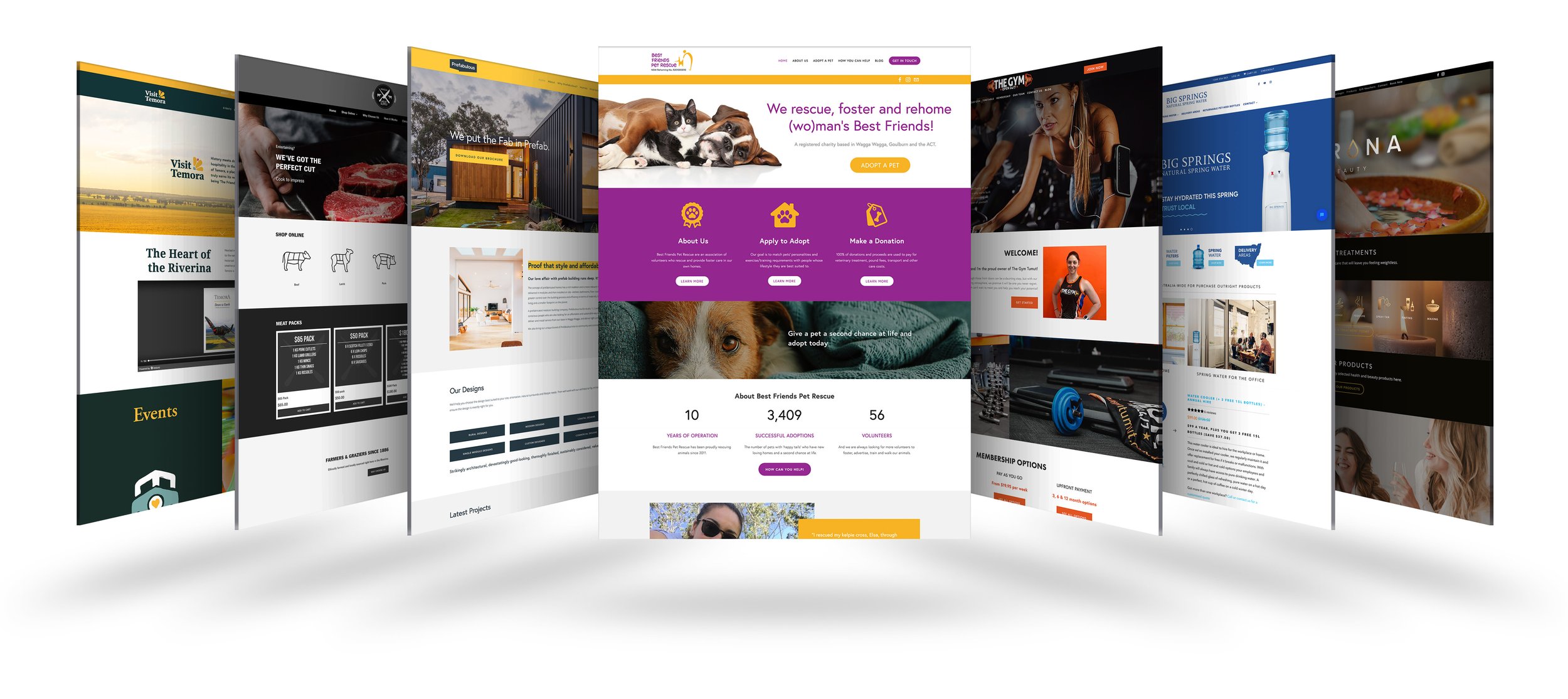Website Design SG Packages for Cost-Effective and High-Quality Results
Top Trends in Site Style: What You Required to Know
As the landscape of website layout remains to evolve, recognizing the current trends is vital for creating reliable and engaging online experiences. Minimalism, dark mode, and mobile-first techniques are amongst the key styles forming modern-day layout, each offering unique benefits in customer involvement and functionality. In addition, the emphasis on availability and inclusivity highlights the significance of creating digital settings that accommodate all users. However, the ramifications of these trends go beyond aesthetics; they stand for a shift in just how we regard user communication. What other factors are influencing these style options today?
Minimalist Design Visual Appeals
In current years, minimalist design looks have become a leading fad in website style, highlighting simplicity and performance. This approach prioritizes vital web content and eliminates unneeded elements, consequently improving individual experience. By concentrating on clean lines, adequate white area, and a minimal shade scheme, minimalist layouts promote simpler navigation and quicker tons times, which are critical in keeping customers' focus.
Typography plays a considerable duty in minimal design, as the selection of typeface can stimulate certain emotions and guide the individual's journey through the content. The strategic usage of visuals, such as top notch pictures or subtle animations, can enhance individual interaction without overwhelming the overall aesthetic.
As digital rooms continue to evolve, the minimal style principle stays pertinent, satisfying a varied target market. Businesses embracing this fad are often perceived as modern and user-centric, which can considerably affect brand assumption in an increasingly competitive market. Ultimately, minimalist design visual appeals provide an effective service for reliable and attractive website experiences.
Dark Setting Appeal
Accepting an expanding pattern among individuals, dark setting has obtained considerable appeal in website design and application interfaces. This style method includes a mostly dark color scheme, which not just enhances aesthetic charm but also minimizes eye pressure, particularly in low-light settings. Users progressively appreciate the convenience that dark setting provides, bring about much longer engagement times and an even more enjoyable browsing experience.
The fostering of dark mode is also driven by its perceived benefits for battery life on OLED displays, where dark pixels take in much less power. This sensible benefit, combined with the elegant, modern-day look that dark styles offer, has actually led many designers to include dark mode alternatives into their projects.
In addition, dark mode can develop a sense of depth and focus, accentuating key components of a site or application. web design company singapore. Because of this, brands leveraging dark mode can boost individual interaction and produce a distinct identity in a crowded industry. With the pattern remaining to rise, incorporating dark mode into internet designs is coming to be not just a choice however a typical assumption among users, making it necessary for designers and designers alike to consider this facet in their tasks
Interactive and Immersive Components
Frequently, designers are integrating interactive and immersive components right into web sites to boost customer involvement and create memorable experiences. This pattern reacts to the raising assumption from individuals for even more dynamic and customized communications. By leveraging features such as computer animations, videos, and 3D graphics, websites can attract users in, cultivating a much deeper link with the content.
Interactive components, such as quizzes, polls, and gamified experiences, encourage visitors to proactively take part as opposed to passively take in info. This interaction not only maintains users on the site longer however additionally raises the probability of conversions. In addition, immersive modern technologies like digital fact (VIRTUAL REALITY) and augmented reality (AR) use one-of-a-kind possibilities for companies to display products and solutions in an extra engaging fashion.
The consolidation of micro-interactions-- little, refined computer animations that react to user actions-- likewise plays a crucial duty in improving functionality. These communications provide feedback, boost navigating, and develop a feeling of fulfillment upon completion of tasks. As the electronic landscape remains to evolve, making use of interactive and immersive aspects will certainly stay a click this site significant focus for designers aiming to produce interesting and reliable online experiences.
Mobile-First Technique
As the occurrence of mobile gadgets proceeds to surge, taking on a mobile-first approach has come to be important for web developers intending to enhance user experience. This technique emphasizes creating for mobile devices prior to scaling up to larger displays, ensuring that the core capability and material are accessible on one of the most typically used platform.
Among the key advantages of a mobile-first method is enhanced efficiency. By concentrating on mobile layout, sites are streamlined, minimizing load times and improving navigating. This is especially important as individuals anticipate fast and responsive experiences on their mobile phones and tablet computers.

Ease Of Access and Inclusivity
In today's digital landscape, guaranteeing that internet sites come and comprehensive is not just a finest practice but a fundamental need for getting to a diverse target market. As the net remains to work as a primary means of interaction and commerce, it is important to recognize the varied demands of customers, including those with handicaps.
To accomplish true access, internet developers have to comply with established standards, such as the Internet Material Access Standards (WCAG) These standards emphasize the importance of offering message choices for non-text material, guaranteeing keyboard navigability, and maintaining a read the full info here sensible web content structure. In addition, inclusive layout practices prolong beyond compliance; they include producing a user experience that suits different capacities and preferences.
Integrating attributes such as adjustable message sizes, color comparison choices, and screen visitor compatibility not only boosts use for people with handicaps yet likewise enriches the experience for all individuals. Inevitably, prioritizing availability and inclusivity fosters a much more fair digital atmosphere, urging more comprehensive involvement and involvement. As companies increasingly recognize the moral and economic imperatives of inclusivity, incorporating these concepts into website layout will end up being a crucial facet of effective online strategies.
Conclusion
